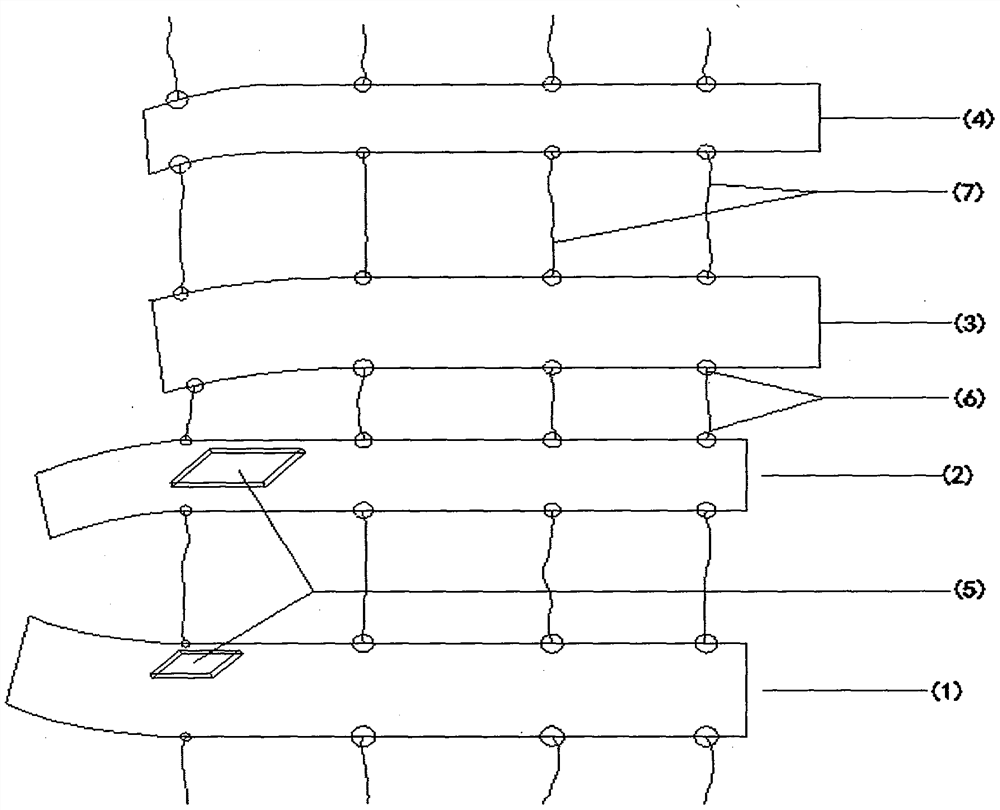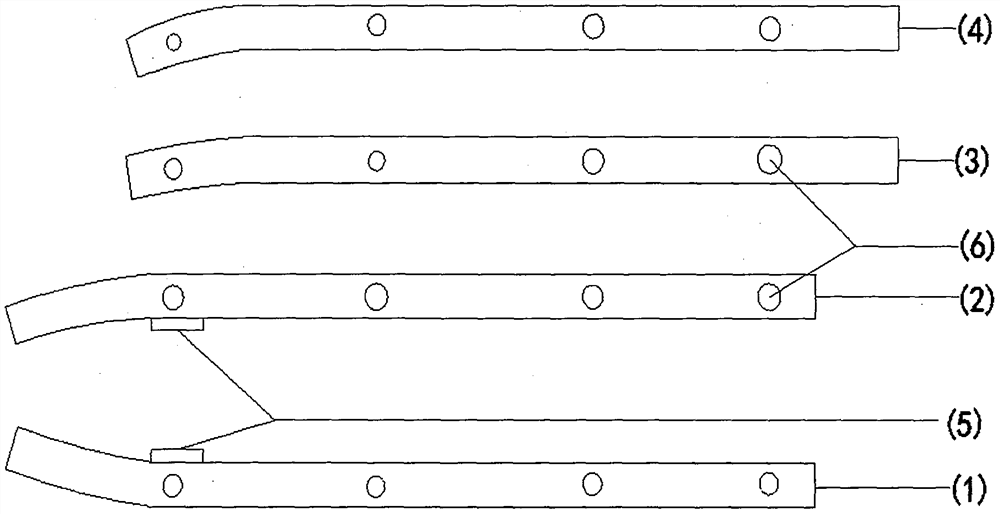Distal radius integrated splint (integrating splints, pressure pads and strapping tapes)
A technology of distal radius and binding band, which is applied in the field of integrated splint of distal radius (integration of splint, pressure pad, and binding band), can solve the problem that the thickness, size and position of the pressure pad cannot be adjusted randomly and cannot be well adjusted. Maintaining the angle of palm tilt and ulnar deviation, and the failure of static compression and reduction of fracture fragments to achieve the effect of easy promotion, saving time and manpower, and low price
- Summary
- Abstract
- Description
- Claims
- Application Information
AI Technical Summary
Problems solved by technology
Method used
Image
Examples
specific Embodiment approach
[0012] Specific implementation method: First, the patient with distal radius fracture is manually reset, and then the sleeve-type inner liner of appropriate thickness and pure cotton material is placed on the forearm and the back of the wrist, and the integrated splint (splint, pressure pad, and binding belt integrated) is placed. After adjusting the required thickness and size of the pressurized cotton pad and placing it in a good position, respectively tighten the 4 cotton thread binding belts to the required degree of tightness and tie a knot. A bandage was then wrapped and fixed, the sling was suspended in front of the chest, and the palm was attached to the chest wall, so that the wrist joint was kept in the position of palm flexion and ulnar deviation under the action of natural gravity.
Description of drawings
[0013] Below in conjunction with accompanying drawing and implementation the present invention is further described
[0014] figure 1 It is the front view of...
PUM
 Login to View More
Login to View More Abstract
Description
Claims
Application Information
 Login to View More
Login to View More - R&D
- Intellectual Property
- Life Sciences
- Materials
- Tech Scout
- Unparalleled Data Quality
- Higher Quality Content
- 60% Fewer Hallucinations
Browse by: Latest US Patents, China's latest patents, Technical Efficacy Thesaurus, Application Domain, Technology Topic, Popular Technical Reports.
© 2025 PatSnap. All rights reserved.Legal|Privacy policy|Modern Slavery Act Transparency Statement|Sitemap|About US| Contact US: help@patsnap.com


